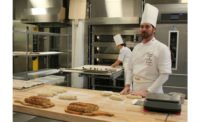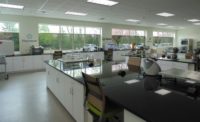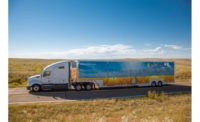Puratos, which has its U.S. headquarters in Cherry Hill, NJ, recently opened its newest innovation center in Norwood, MA, just outside of Boston.
Puratos already has innovation centers at its headquarters in Cherry Hill, as well as in Kenosha, WI; Rancho Dominguez, CA; Portland, OR; Miami; and Seattle. The company is planning its eighth innovation center for Chicago in 2018.
The innovation centers serve three primary purposes: developing concepts and prototypes across bakery, pâtisserie and chocolate; collaboration with customers; and training staff. The facilities are likewise divided into dedicated areas for bakery, pâtisserie and chocolate, with a full range of equipment and technology to fuel innovation.
Snack Food & Wholesale Bakery attended the grand opening of the Boston Innovation Center and sat down with Daniel Malcorps, CEO, and Karel Zimmermann, president/markets director, North America, to learn more about how the facility fits into the Puratos corporate strategy in the U.S.
Douglas J. Peckenpaugh: What was the impetus for creating the Boston Innovation Center?
Karel Zimmermann: We are constantly expanding, and we have a lot of geographies still to cover. So each year we’ll be opening a branch. We have a number of fairly large key accounts in the Boston area.
DJP: Do all of the innovation centers have the same range of capabilities?
KZ: Yes. We make sure we cover all three segments: bakery, pâtisserie and chocolate. Within these three categories we have different channels. We have people that are artisan bakers, we have people that run supermarkets, we have industrial bakers. So we have made sure that the equipment in the innovation centers is very similar, that we have a standard approach. We work with a number of companies and can address the different needs.
We have a separate air conditioned chocolate room where we can work on chocolates. We’ve learned over the years that you cannot have chocolate in a bakery—it will not work. So we decided that we have to have that separate space in the innovation center.
In our Pennsauken plant located in New Jersey, we have more industrial competencies, where we can really simulate large, industrial lines. We have pilots there that can simulate how certain products will work on industrial lines in large bakeries.
DJP: Where will you locate additional innovation centers?
Daniel Malcorps: We have a commitment to open more each year. Miami and Boston opened this year, and Chicago will be next. Then we’ll go to Texas.
DJP: You’re continuing to make a large investment into the U.S. market. How does the U.S. fit into the global strategy for Puratos?
KZ: The U.S. is definitely the leading country, the largest market in the world and still growing nicely with a huge opportunity for differentiation. The American consumer is very much changing at the moment. They are expecting very different things. They are passionate about pleasure, about convenience, but also about health, and all these correspond very well with our vision. There is a real fit between what we have proposed and what the American country is demanding.
DJP: How does your Taste/Tomorrow research factor into your corporate strategy?
KZ: Our last Taste/Tomorrow survey was in 2015, and we’ll have another one in 2019. Anything that we do, we tie it to this survey. They show what the consumer wants, and then tie the ideas to the capabilities of a supermarket or a bakery, to show how they tie into different finished goods. (For more on the Puratos Taste/Tomorrow research, see “The journey to innovation.”)
DM: And we cross that with other new global technologies coming from our R&D pipeline. Together we co-create a future. And then once that future is created, we jointly test the creation with sensory analysis. So we have a validation from the consumer that what we have created connects to what they like.
DJP: The Puratos Sensobus, a mobile sensory testing lab, brings this process directly to the consumer, parking in areas like outside of supermarkets and welcoming consumers inside the bus to taste and evaluate new concepts. How many days do you think the Sensobus is out in the field gathering data each year?
DM: Last year, it was on the road 37 weeks of the year, so we do a lot of consumer validation of concepts. We also do internal work to make sure whenever we go and present something to customers that it has already been validated. Our customers really see the benefit of it in terms of making sure that we can reach the right type of consumer.
KZ: It’s very unique. You touch the real shopper. We can go to a supermarket that wants to validate a concept, wants to test it against a different product that they have enhanced. They will have shoppers come out of the supermarket, go into the bus and they will give us data on taste, on texture, on shape, on format, on price, and so on. In a week we can get 2,000 people through the bus.
DM: At this point, we have tested more than 1 million consumers for different processes.









